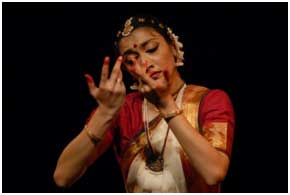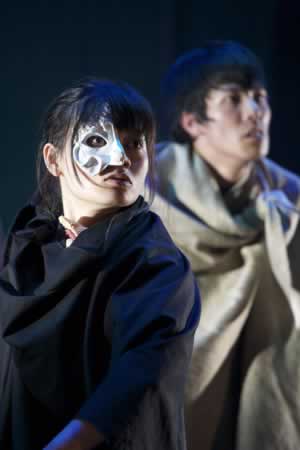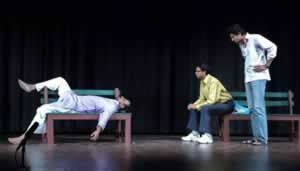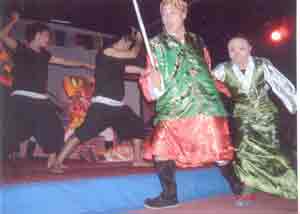The dispute, as is well known, is that some Hindu organisations claimed that the mosque known as Babri Masjid in Ayodhya, a town in Faizabad district of Uttar Pradesh, was built by Mir Baqi, a general of Emperor Babar, in 1528 after demolishing a grand temple on the spot, that marked the birthplace of Lord Ram – the most important incarnation of Vishnu in the Hindu belief system. So, while the Hindus wanted to remove the mosque from the spot and build a Ram temple there, some Muslim organisations disputed the legitimacy of the Hindu claim. In the independent India, the matter has been in the courts since 1950. The mosque was destroyed on 06th December 1992 when a political rally developed into a riot involving 150,000 people. The report of Liberhan Commission, appointed on 16th December 1992 to investigate the demolition of Babri mosque, was tabled in the Indian parliament on 24th November 2009 and it has listed people responsible for the demolition of the mosque, indicting some very senior political figures of India.
No doubt, the manner the disputed structure called Babri Mosque was demolished on 06th December 1992 was wrong. The organisers of the rally on the day had promised to the Union Government and gave an undertaking to the Supreme Court of India that the structure would not be harmed. After giving that undertaking, the act of demolishing the mosque, that too in front of the world television cameras, was unacceptable. It left the Muslim community in India with a feeling of a gross excess and insult, and it belittled the Indian State.
However, the crude nature of the events on 06th December 1992 should not blind us to the truth of history and propriety. As this writer has argued in another article published in this magazine, where some Hindu groups were the guilty party, no one has the right to attack others’ places of worship. And if it has been done by someone in the past, mature and civilized behaviour requires that it should be apologised for, and the mistakes rectified. As the Liberhan Commission acknowledges, Ayodhya is of special importance to Hindus. Justice MS Liberhan makes the observation:
“This Place had become emotive issue owing to its position as the birth place of Ram, a theme present in every facet of the culture, connecting the past with the present & the future.” (Report of the Liberhan Ayodhya Commission of Inquiry,para 9.5, p. 24)
The Muslim groups at the forefront of this dispute contend that there are provisions in the Quran, according to which no mosque can be constructed at someone’s place of worship. So, this mosque could not have been built by destroying a temple.
Well, the history does not support this argument.
No historian disagrees with the fact that the Shiva Temple at Somnath was destroyed several times by Muslim invaders and rulers, starting with the plunder of its treasures by Mahmoud of Gazni in 1024, and finally by the Mughal Emperor Aurangzeb in 1701, who also built a mosque on the spot. There is incontrovertible evidence that 27 temples were dismantled to construct the Quwwat-ul-Islam Mosque in the Kutub Minar complex. Many parts of the Dilwara Jain Temples complex were destroyed by successive Muslim rulers. The Kashi Vishwanath Temple in Varanasi was demolished four times by Muslim invaders and rulers. Anyone who has visited the site can make out how brazenly the so-called Gyanvapi Mosque is built upon the temple complex to humiliate the Hindu community.
What happened in Somnath, Delhi, Dilwara and Varanasi did happen at many other places. According to some historians, more than 3000 temples have been destroyed and replaced by mosques by Muslim rulers in India.
Regarding the origin of the Babri mosque in Ayodhya, after 17 years of his study, Justice Liberhan concludes that “the construction of the mosque by Mir Baqi in 1528 is now an admitted fact.” (ibid, para 18.9, p 62).
And, there is plethora of evidence to show that the Babri mosque was constructed after destroying a Ram temple on the spot.
The available records of the Ayodhya dispute in government documents go back to the middle of the 19th century. According to British sources, Hindus and Muslims used to worship together in the Babri Mosque complex, earlier called Masjid-e-Janamsthan, for hundreds of years until about 1855. The then Commissioner of Faizabad, P Carnegy, wrote in 1870: “It is said that up to that time (viz. the Hindu-Muslim clashes in the 1850s) the Hindus and Mohamedans alike used to worship in the mosque temple.” As quoted in a BBC Urdu Service programme, Meezan, broadcast on 11th December 1990, earlier in 1861, giving detailed description of Ayodhya in his book, Historical Sketch of Faizabad Tehsil, including the Former Capital of Ayodhya and Faizabad, Mr Carnegy had written: “It seems there was a grand temple at this place, and in 1528, during his stay in Ayodhya, Babar ordered the destruction of that temple.”
The matter first reached the British courts in 1885-86. Efforts in 1883 to construct a temple on Ram chabootra (platform) situated in the complex were halted by the Deputy Commissioner who prohibited it on 19th January 1885. Raghubir Das, a Mahant (head priest), filed a suit before Faizabad Sub-Judge Pandit Harikishan seeking permission to construct the temple on this chabootra measuring 17 ft x 21 ft. The Sub-Judge, though agreed with Raghubir Das’s contention that it was Ram’s birth-place, but dismissed the suit. An appeal was filed in the court of Faizabad District Judge Colonel JEA Chambiar. On 18th March 1886, Col Chambiar passed an order in which he wrote: “I visited the land in dispute yesterday in the presence of all parties. I found that the Masjid built by Emperor Babar stands on the border of Ayodhya, that is to say, to the west and south. It is clear of habitants. It is most unfortunate that Masjid should have been built on the land specially held sacred by the Hindus, but as that event occurred 358 years ago it is too late now to remedy the grievance.”
Again, while rejecting the subsequent appeal filed by Raghubir Das on 25th May 1886 before him, the Judicial Commissioner of Awadh, W Young, wrote in his judgement on 01st November 1886: “The place where the permission to build the temple is being asked for is situated in a premises that has got a mosque which came into existence because of discrimination and religious repression by an emperor who chose this place for the mosque with total disregard for the Hindus’ faith. The access available to the Hindus for entering the mosque is very narrow, and for years they have been trying to get proper facilities for their entrance, and they want to construct two buildings in the premises – one, Sita’s Kitchen, and the other, Ramchandra’s birth-place.”
As Rashid Ashraf, the producer and presenter of the BBC Urdu Service programme, concludes, though the permission to construct a temple was refused and the Hindus and Muslims continued to worship alongside each other in that complex, it was through this court case that the British judges accepted the Hindu claim that it was the birth place of Lord Ram.
Afterwards, writing in the Faizabad District Gazetteer in 1905, HR Neville made it totally clear that the Janmasthan temple “was destroyed by Babar and replaced by a mosque.” Mr Neville wrote: “The Janmasthan was in Ramkot and marked the birthplace of Rama. In 1528 AD Babar came to Ayodhya and halted here for a week. He destroyed the ancient temple and on its site built a mosque, still known as Babar’s mosque. The materials of the old structure (i.e., the temple) were largely employed, and many of the columns were in good preservation.” (HR Neville, Faizabad District Gazetteer, Lucknow, 1905, pp 172‑177, cited by Harsh NarainThe Ayodhya Temple Mosque Dispute: Focus on Muslim Sources, Penman Publications, New Delhi, 1993).
Thus, after investigating the site and relevant historical documents several times, the British officials and judges agreed that the so-called Babri mosque was constructed on the spot where a Ram temple stood before it.
As opposed to the clear judgements given by the British judges, the courts in the independent India have decided to sit on the matter for ever. Four civil suits regarding the title of Ram Janmabhoomi have been filed in the district court of Faizabad, the first one being filed in 1950. After 40 years, in 1989 these cases were transferred to theLucknow bench of the Allahabad High Court. Since then another twenty years have passed, and no judgement has been made so far. In fact, judges are often quoted as saying that they are not capable of deciding a historical event.
Actually, the most important question is – What are these courts deciding now when twice the British judges had accepted the Hindu claim more than one hundred years ago!
Unable to decide the matter themselves, in 2003 the Lucknow Bench asked the Archaeological Survey of India (ASI), to conduct a more in-depth study and an excavation to ascertain the type of structure that was beneath the rubble.
The ASI team was headed by an archaeologist of international repute, BB Lal, who had earlier worked for UNESCO committees and served as President of the World Archaeological Congress. The ASI report indicated proof of a 10th century temple under the mosque. In the words of ASI researchers, they discovered “distinctive features associated with… temples of north India”. The excavations yielded: “stone and decorated bricks as well as mutilated sculpture of a divine couple and carved architectural features, including foliage patterns, amalaka, kapotapali, doorjamb with semi-circular shrine pilaster, broke octagonal shaft of black schist pillar, lotus motif, circular shrine having pranjala (watershute) in the north and 50 pillar bases in association with a huge structure” (Evidence of temple found: ASI, The Tribune, August 26, 2003)
However, as the findings of the ASI were not to their liking, the Muslim groups termed the ASI report as “prepared under political pressure”. Zaffaryab Jilani, the counsel of the Sunni Central Waqf Board, said: “The ASI has filed a saffron report”.
Firstly, it is insulting to the integrity of a world renowned archaeologist like BB Lal, who headed the ASI survey. If the Muslim groups do not accept the authenticity of the ASI, one wonders which institution of India they do really respect! The question is, if the ASI is accused of preparing its report under the influence of the Hindu parties, under what political pressure P Carnegy, Colonel JEA Chambiar, W Young and HR Neville made their statements and judgements! The findings of the ASI in 2003 only corroborated the statement made by HR Neville a century ago, as quoted above.
It is because of this Main‑Na‑Maanu (I‑will‑not‑agree) attitude of the Muslim groups that the Indian courts find themselves unable to decide the matter. Actually, it is not that all Muslims are against restoration of Ram and Krishna temples. First of all, Shia Muslim organisations have expressed no objection to the Ram Temple. Then, a lot of other Muslim organisations and ordinary Muslims, irrespective of the denomination they belong to, have expressed their support to the construction of Ram temple. The so-called Muslim groups opposed to the restoration of the Ram Temple and other important Indian symbols are dominated by people who actually should have no place in post‑partition secular India. For instance, Syed Shahabuddin, the leader of the so-called Babri Mosque Action Committee, is the same person who raised the demand to ban Salman Rushdie’s book in India, has been demanding Shariat for the Indian Muslims, and championed the Islamist cause in Shah Bano case – denying matrimony to divorced Muslim women. Similarly, Sultan Salahuddin Owaisi was the same person whose followers have been indulging in violence against Taslima Nasreen and compare Shabana Azmi to prostitutes, and whose party opposed Hyderabad joining India. These people might be living in India, but actually they are soul‑mates of the Taliban.
And, rather than being respectfully persuaded to accept the truth and act reasonably, these hard-line Muslim groups are actually being encouraged in their intransigence by the self-professed “secular” politicians and intellectuals of India. ‘Secular’ is the Indian equivalent of the Western concept of ‘non-racist’, and as per the current Indian definition, one is “secular” only if one agrees with Muslim fundamentalists! So, politicians like Mulayam Singh and Lalu Prasad, who openly play casteist and racist politics, are very “secular” because of their proclamations that ‘a Muslim can do no wrong’.
While the Indian courts express inability to arbitrate in the dispute, in the independentIndia the people who have arrogated themselves to decide the issue are the Marxist historians of the JNU. One such historian is Prof Ram Sharan Sharma, who writes,“Ayodhya seems to have emerged as a place of religious pilgrimage in medieval times. Although chapter 85 of the Vishnu Smriti lists as many as fifty-two places of pilgrimage, including towns, lakes, rivers, mountains, etc., it does not include Ayodhya in this list.”
Now, the way Prof Sharma quotes Vishnu Smriti, it sounds like Manu Smriti that every Hindu should be familiar with. By quoting little known book, Prof Sharma wants to prove that Ayodhya is not significant in the eyes of the Hindus! One would like to ask Prof Sharma, as per his research how many Hindus consult Vishnu Smriti before embarking on a pilgrimage! I’m over fifty, and I certainly had never heard of this “great” Smriti before my research for this article. As regards, Prof Sharma’s assertion of Ayodhya emerging as a place of pilgrimage in medieval times, according to the Cambridge dictionary, medieval times is the period in European history from about 600 AD to 1500 AD. If Prof Sharma accepts this definition, how does it prove that there was no temple in Ayodhya in 1528? If anything, it only gives credence to the Hindu claim that the temple destroyed by Babar was constructed by Garhwal king Govindachandra (1114–1154).
Prof Sharma also says that Tulsidas, who wrote Ramcharitmanas in 1574 at Ayodhya, does not mention it as a place of pilgrimage. This suggests that there was no significant Hindu temple at the site of the Babri Mosque.
This is the most ridiculous argument. Bethlehem wasn’t the place of pilgrimage before the time of Jesus Christ’s birth. As normal, Ayodhya developed into a place of pilgrimage after the event, while Ramcharitmanas is written in the present form, set in Ram’s time. Actually, not only is this the most ridiculous argument, it is an attempt to misrepresent Tulsidas and falsify Indian mythology. Ramcharitmanas is divided into seven sections. And, out of seven sections, Tulsidas devotes one full section to Ayodhya, called Ayodhya Kaand, and celebrates the beauty of Ayodhya at many other places in the book. What could have been a better way of describing Ayodhya as a place of pilgrimage!
Prof Sharma ignores the basic fact that the classic Sanskrit text Ramayan by Maharishi Balmiki is the ultimate authentic source of Ram’s story, and it celebrates Ayodhya as the birthplace of Ram and its grandeur as the capital of Ram’s kingdom.
Another Marxist historian Romila Thapar says, “If we do not take Hindu mythology in account the first historical description of the city dates back recently to the 7th century, when the Chinese pilgrim Xuan Zang observed there were 20 Buddhist temples with 3000 monks at Ayodhya, amongst a large Hindu population. In 1528, nobles under Mughal emperor Babur constructed a mosque over the disputed site. The mosque, called the Babri Masjid, has become a source of contention for some Hindus. At the end of the 19th century, Ayodhya contained 96 Hindu temples and 36 Muslim mosques. Little local trade was carried on, but the great Hindu fair of Ram Navami held every year was attended by about 500,000 people”.
The question is – why we should not take the Hindu mythology into account? Can we respect Greece, while ignoring the Greek mythology! Can one understand the history ofEurope without taking Christianity into account? Or can we understand the Arab world without taking Islam into account? The Hindu mythology is the base of what the world calls Indian culture and civilization. Hinduism and India are so intertwined that it is impossible to separate the two. In many languages of Europe, the word for Indian is Hindu. Or does Ms Thapar believe Hindu mythology is all a myth? Ram’s life and Ram’s birthplace is a myth? Ms Thapar should explain why half a million people would gather in Ayodhya every year. Does it not mean anything!
In fact, the only myths that are being created are by the self‑professed Marxist historians who are spreading the ideas that Babar was an Indian! Ibrahim Lodhi and Alauddin Khilji were indigenous rulers! Well, they were as much indigenous rulers as the Viking and Norman rulers in England, as much as the Dutch and French rulers inIndia! No one can deny the fact that Babar came all the way from Ferghana (in present day Uzbekistan) and invaded India in 1526 after crossing Kyrgyzstan, Tajikistan, andAfghanistan. Even if he didn’t construct a mosque at Ram’s birthplace, could any of these “intellectuals” tell us what business Babar had to launch unprovoked attacks on Indian kingdoms and murder thousands of innocent people!
Marxists are supposed to side with the victim and fight against present and historical injustice. And, it is historians’ duty to pursue the truth, no matter how ugly it is. But Indian Marxist historians have decided to side with an invader, who did everything in his might to crush the local culture and impose a foreign religion and language on India! Quoting an obscure piece of religious literature and misrepresenting the classic texts to justify the imposition of a foreign culture on a people is not great pursuit of truth, but intellectual dishonesty! In the face of overwhelming historical and archaeological evidence, clutching to straws and denying the oppression is not scientific socialism, but rationalising cowardice!
Had these historians been really pursuing truth, they would have tried to find where the missing pages of Babarnama are and who is responsible for those pages gone missing. The Marxist historians have made no attempt to find another book that went suddenly missing in most libraries in India. It was Hindustan Islami Ahad Mein (India Under Islamic Resolve) by Maulana Hakim Saiyid Abdul Hai, which like the original Babarnamais stated to include a chapter that described the demolition of the Ram Janmabhoomiand other temples. Instead, these people find solace in siding with the invader and the oppressor. And, these “secular intellectuals” are totally silent to the findings of the ASI in 2003.
These “intellectuals” do not want to know the truth. They fear truth and justice. They call those who speak the truth and seek redress to the past repression communalists and racists!
White Man went all over the world with sword in one hand and the Bible in the other. The native communities of Africa, Asia, Australia and America were colonized, economically exploited and culturally suppressed. Indigenous religious beliefs were dubbed as mumbo-jumbo and Christianity was imposed on the people. Europeans imposed their culture on the Native American Indians. Now, if the Native American Indians demand that they want to retrieve a few symbols of their past culture, would we call them racists! Hindu is nothing else, but a person who maintains a connection with the pre-Islamic Indian culture. They are a defeated people at the hands of Muslim invaders. Now, when the Hindus are asking for retrieving some symbols of their ancient culture, which were crushed by the invaders, there is nothing communalist or racist about it. On the contrary, those who want to deny the vanquished the right to retrieve symbols of their past culture are actually siding with oppression. Love for the relic of Indian defeat and a symbol of invader’s triumphalism is perverted secularism!
We should be mature enough to understand that the struggle against the excesses committed by Muslim invaders or rulers, or by Hindu and British rulers for that matter, does not mean a fight or hatred against the communities those rulers came from, or even against their descendents. Peace and harmony in the society is essential. But falsifying history cannot achieve true harmony. Therefore, it is of paramount importance that we do not bind ourselves in falsehood. The truth of history should never be obscured or denied.
Copyright © 2010 Krishan Tyagi. All Rights Reserved.





